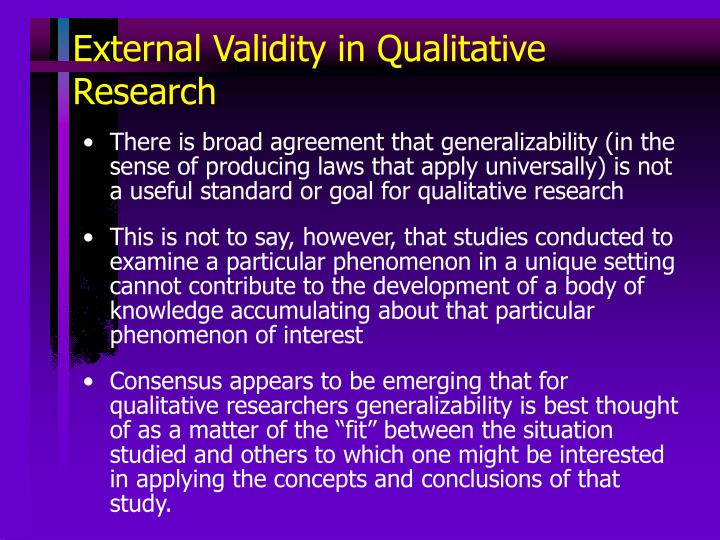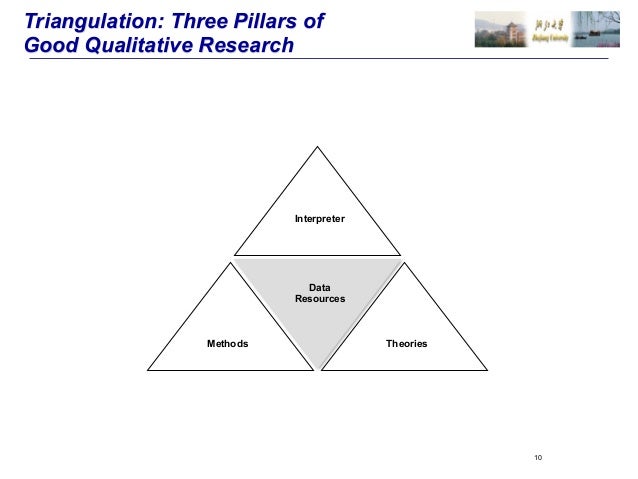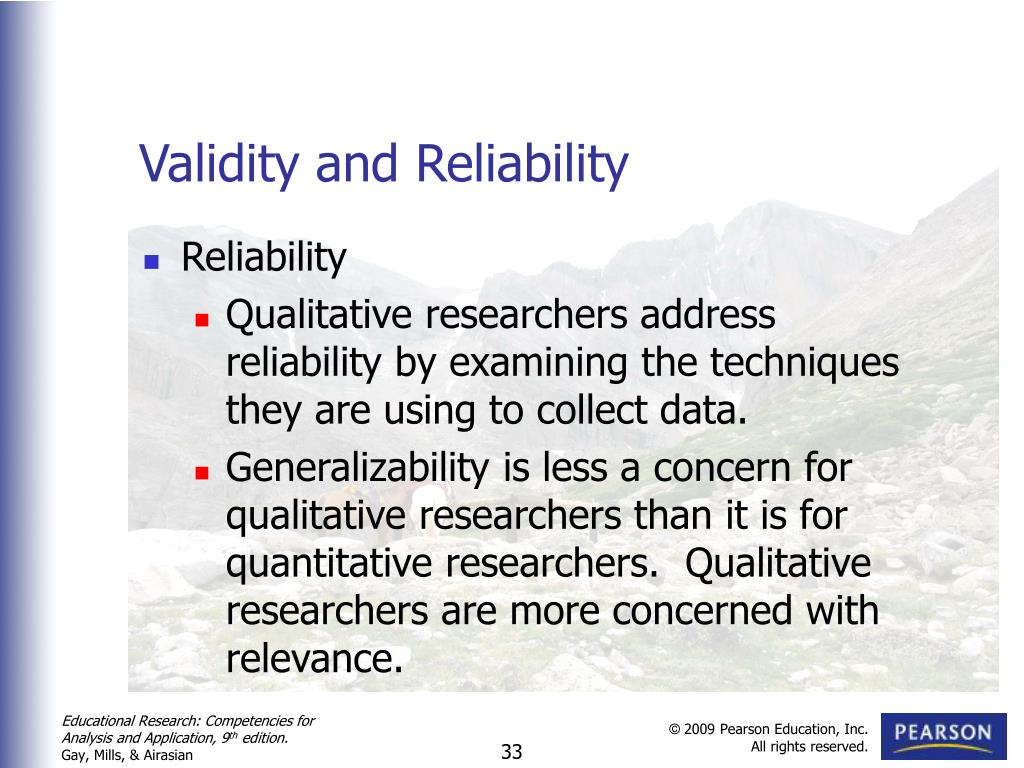
You may use a drawing program or import a clip art. REFLECTION: In your Reflection Journal, sketch a visual representation of what triangulation means in a general sense. As you explore and apply these methods to your own research investigation, always question if you are implementing them in a way that makes the process and the results reliable and fair. Many research tools and models have their own tests for reliability and validity built in to their basic procedures and methodologies. By using at least three different methods, the researcher is about to obtain multiple, diverse perceptions of a single concept. This can mean using several kinds of methods or data, including using both quantitative and qualitative approaches. Many researchers argue that triangulation strengthens a study by combining methods. As the name implies, triangulation is a strategy that controls bias and helps to establish valid conclusions because it uses at least three (thus, the "tri-" prefix) different types of methods or tools to collect data from which conclusions are made.

Triangulation is one test for improving the validity and reliability of research or evaluation of findings. The idea of discovering truth through measures of reliability and validity is replaced by the idea of trustworthiness, which is “defensible”and establishing confidence in the findings.


Because it is more difficult to define reliability and validity in qualitative terms, many researchers have developed their own concepts of validity and have often generated or adopted what they consider to be more appropriate terms, such as, quality, rigor and trustworthiness. While it is difficult in qualitative research to prove validity and reliability through reproducing the same results over and over, like a researcher can do in quantitative research, some qualitative researchers believe that the concept of dependability and consistency in results can develop a sense of validity for qualitative research.Ĭonsistency of data is achieved when the steps of the research are verified through examination of such items as raw data, data reduction products, and process notes. Researchers argue that maintaining the trustworthiness of qualitative research depends on the same issues of quantitative studies known as validity and reliability.


 0 kommentar(er)
0 kommentar(er)
